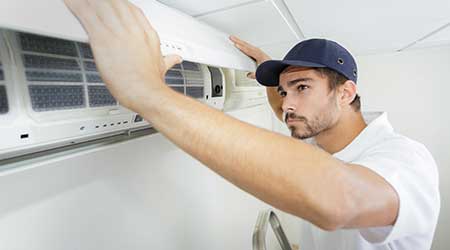Air filtration systems have evolved over the years in response to evolving needs of occupants of institutional and commercial facilities, according to an article from Facility Maintenance Decisions on the FacilitesNet website.
First introduced in the 1930s, their primary function was to reduce the chance of fires in building heating systems by reducing the volume of dust that collected on heating elements.
The first major changes in building air filtration systems came during the 1980s and 1990s in response to energy-conservation requirements and evolving indoor air quality concerns.
That same time period saw the development of the first standards for testing the efficiency of air filtration systems; ASHRAE Standard 52.2 MERV (Minimum Efficiency Reporting Value).
Today, thanks in part to the development of the ASHRAE and other standards, new air filtration systems have much higher filtration efficiencies than the early-generation systems. The most common filtration systems in use today include flat-panel, pleated, extended surface filters, and electronic air filters.

 Contaminants Under Foot: A Closer Look at Patient Room Floors
Contaminants Under Foot: A Closer Look at Patient Room Floors Power Outages Largely Driven by Extreme Weather Events
Power Outages Largely Driven by Extreme Weather Events Nemours Children's Health Opens New Moseley Foundation Institute Hospital
Nemours Children's Health Opens New Moseley Foundation Institute Hospital Code Compliance Isn't Enough for Healthcare Resilience
Code Compliance Isn't Enough for Healthcare Resilience Ribbon Cutting Marks First Phase Completion for New Montefiore Einstein Facility
Ribbon Cutting Marks First Phase Completion for New Montefiore Einstein Facility